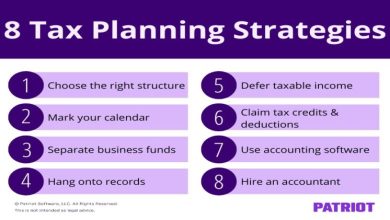Kirill Yurovskiy: How to Do Successful PR to Promote Your Business

Public relations (PR) can be an extremely effective way to spread awareness of your company, build credibility, reach new audiences, and ultimately drive sales. Unlike advertising where you pay for visibility, the idea behind PR is to earn media coverage through compelling and newsworthy stories.
Done right, a solid PR strategy can put your business on the map and significantly boost your success. Here’s a step-by-step guide on how to develop and execute a results-driven PR plan:
Define Your Goals
Before doing anything else, you need to set clear objectives that your PR program will work towards. These could include:
– Generating awareness of a new product/service
– Establishing thought leadership
– Driving web traffic or foot traffic
– Increasing sales
– Enhancing brand image
Get very specific with the outcomes you want to achieve. This will help shape the rest of your strategy.
Identify Your Audience
Now that you know what you want to accomplish, think about who your target audience is. Getting press starts with creating stories that resonate with your ideal customer.
Put together detailed buyer personas that outline demographic information, content consumption habits, pain points and motivations. This will allow you to tailor content and outreach in a way that cuts through the noise.
For example, if you run a catering business specializing in corporate events, you’d want to connect with meeting planners at mid-sized companies.Learn more pr-kirill-yurovskiy.co.uk
Build Media Relationships
Earned media coverage is essentially free advertising driven by impactful storytelling and establishing relationships with the press. That’s why media relations serve as the foundation for quality PR.
Start by making a list of press outlets and journalists that align with your brand and cover topics relevant to what you do. That could include reporters at industry trade publications, local business journals, niche blogs, TV stations and other media.
Do your research to personalize pitches and put together customized media kits including things like company information, executive bios, images and past coverage.
Actively network with reporters by following them on social media, commenting on articles and connecting in person at events. Building genuine connections takes time but pays off.
Craft Compelling Content
Content is king when it comes to PR. Creating valuable and engaging assets will make it much easier to capture media attention while simultaneously attracting your target customers.
Develop a content calendar that outlines topics and formats on a weekly or monthly basis. Useful assets can include things like:
– Trend reports
– Industry surveys
– Expert advice columns
– Infographics
– Videos
– Research studies
– Live events
The content you produce should provide unique insights, data or perspectives that reporters will want to cover while satisfying your audience’s needs.
Distribute and Amplify
Now that you’ve built relationships with the media and have great content to share, it’s time to secure placements.
Leverage tools like PRWeb and PR Newswire to efficiently distribute press releases to thousands of outlets. Not every announcement will get picked up but it can expand your reach.
In addition to mass distribution, send personalized story pitches to hand-picked journalists that describe why your content is timely, relevant and compelling to their audience. Follow up several times if they don’t respond right away.
Once you start getting coverage, amplify it further through social media, email marketing, paid ads, guest posting opportunities and more. This expands visibility.
Evaluate and Adjust
The final piece of the puzzle is measuring results and constantly refining your approach.
Tools like Cision and Meltwater allow you to track keywords, sentiments, reach and engagement levels across news stories, social posts and other online mentions.
Set benchmarks and analyze performance to see what messaging, distribution channels and tactics perform best. Identity gaps in coverage as well.
Use these insights to update target media outlets, improve outreach cadences, develop better content and more. The work is never done when it comes to PR.
Bringing It All Together
Developing an effective public relations strategy requires research, relationship building, compelling content and persistence. But executing across these areas can elevate your brand in the press and marketplace when done correctly.
Be patient, creative and data-driven, and your PR efforts will become an invaluable component of your overall marketing machine.






